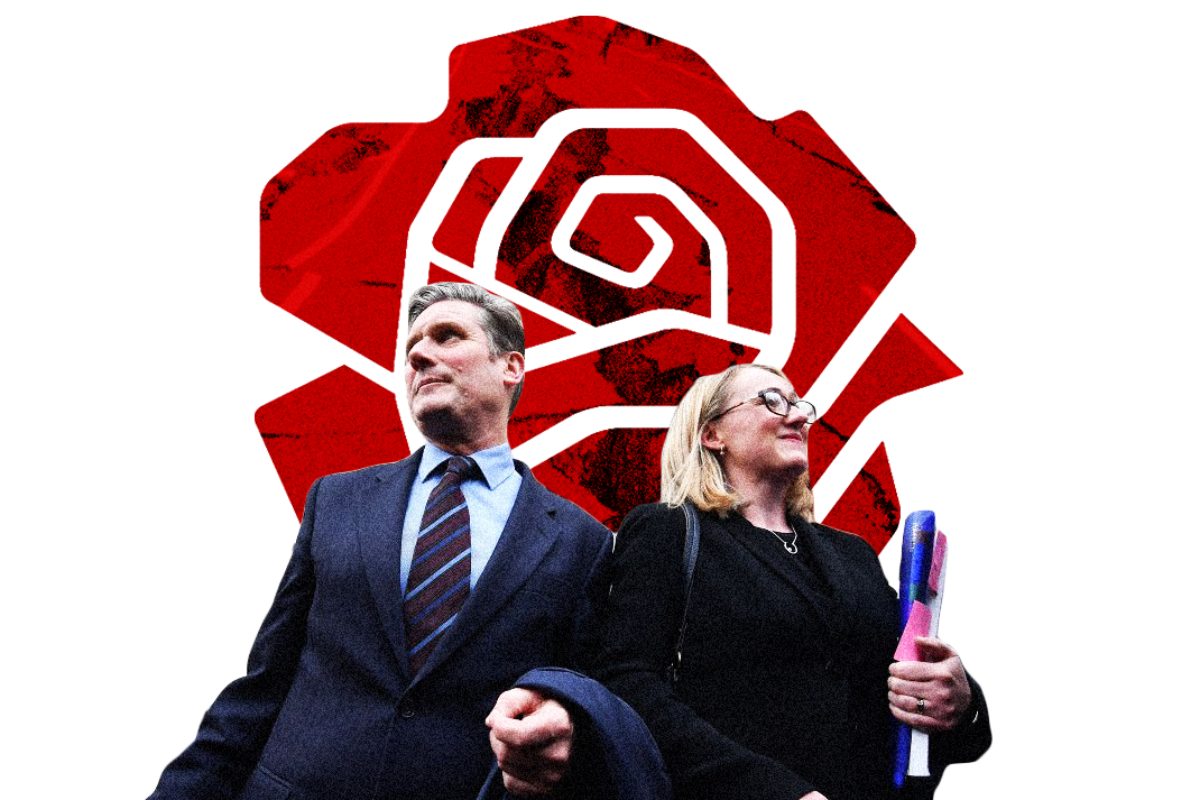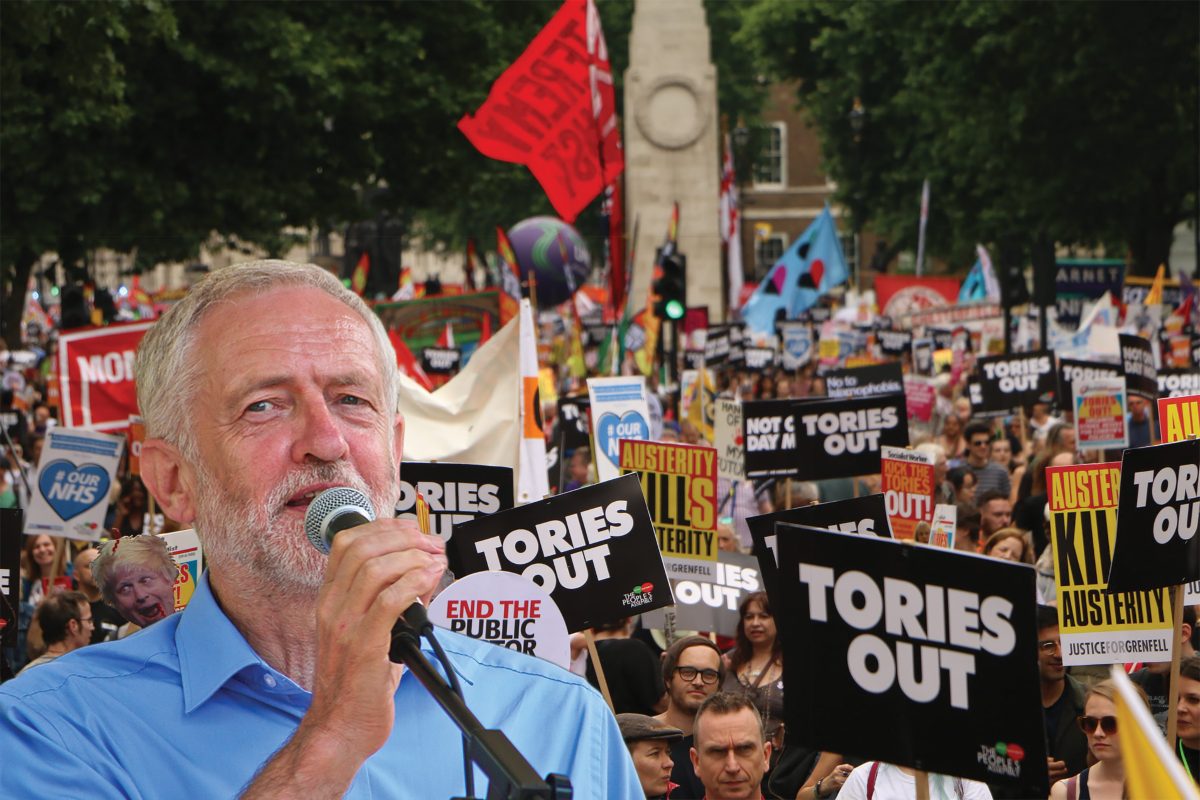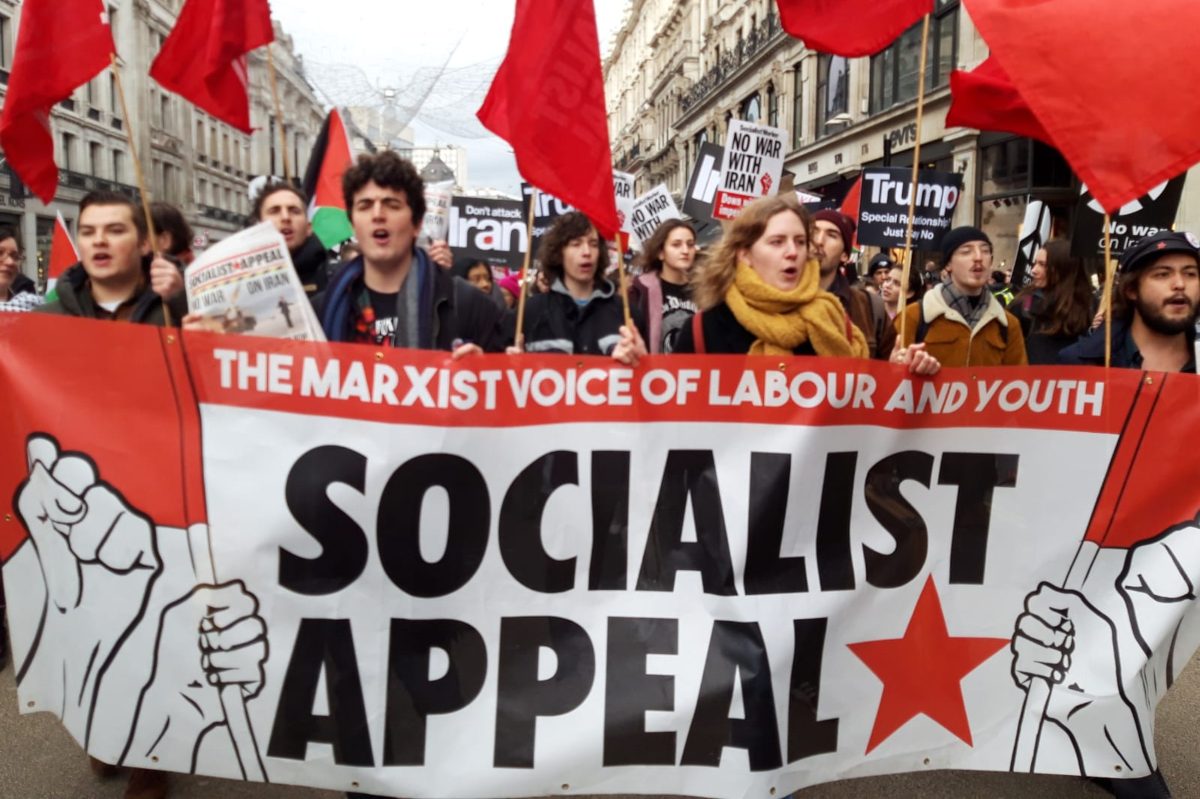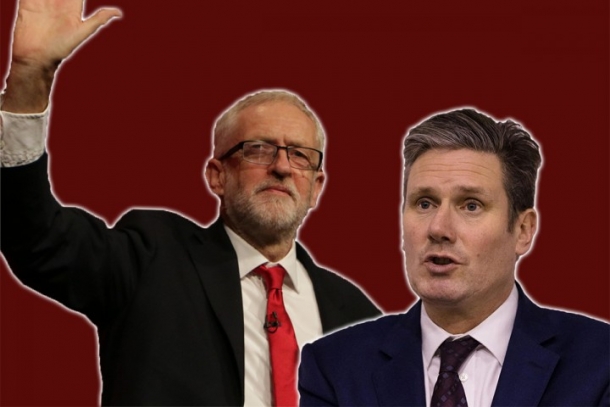Only two days into his leadership, and the establishment are already demanding that Keir Starmer prove his credentials by marching to their tune. But the Labour right wing will have a hard time reversing the gains of the Corbyn movement.
Whilst the coronavirus crisis continues to dominate the headlines, Labour activists are gathering their thoughts in the wake of Saturday’s leadership contest result, wondering where the party is heading with Keir Starmer now at the helm.
Starmer won a convincing majority of 56% in the first round, beating his rivals – Rebecca Long-Bailey and Lisa Nandy – in every section of the Labour electorate: members, affiliates, and supporters.
At the same time, Angela Rayner claimed a victory in the third round, with right-winger Rosena Allin-Khan and left candidate Richard Burgon coming in second and third place respectively.
So much for unity
 The plaudits Starmer has received from right-wing quarters are a telling sign of which direction the party is likely to move / Image: Socialist AppealIn his victory speech, Starmer reiterated his call for ‘unity’. No doubt many grassroots members will want to throw their support behind the new leader, in order to turn attention to the vital task of returning to power. But the plaudits Starmer has received from right-wing quarters are a telling sign of which direction the party is likely to move under his management.
The plaudits Starmer has received from right-wing quarters are a telling sign of which direction the party is likely to move / Image: Socialist AppealIn his victory speech, Starmer reiterated his call for ‘unity’. No doubt many grassroots members will want to throw their support behind the new leader, in order to turn attention to the vital task of returning to power. But the plaudits Starmer has received from right-wing quarters are a telling sign of which direction the party is likely to move under his management.
The establishment have been quick to welcome the new Labour leadership, with capitalist mouthpiece the Financial Times lauding the return of a “credible opposition”. Their agents in the party were also openly celebrating, with Blairite factions Progress and Labour First issuing a joint statement offering Starmer their “100% support”.
This gushing praise for ‘Sir’ Starmer should immediately set alarm bells ringing amongst left-wing Labour members.
Indeed, despite calls from Momentum “to build on Jeremy’s transformative vision”, Starmer has already signalled his intentions by bringing in a complete change of the guard at the top.
Prominent left-wingers in the shadow cabinet - such as Ian Lavery and Richard Burgon – are out. Right-wingers – such as Rachel Reeves and Lisa Nandy - are in. RLB remains, given a tokenistic position as shadow education secretary, as a sop to the left. Filling in the gaps are a team of largely-unknown quantities; obscure figures purposefully chosen in order not to offend either side.
As the old saying goes, judge a man not by the words he speaks, but by the company he keeps. In this respect, with almost all of the Socialist Campaign Group of MPs removed from the shadow cabinet, it is clear that Starmer’s administration is going to be a far cry from that of the Corbyn era.
Marching orders
At the same time, Starmer and his allies have immediately fallen over themselves to demonstrate what ‘respectable statesmen’ they will be. Without being asked by anyone, for example, the Labour leader has prostrated himself before the establishment, saying that he would find it “hard to say no” if the offer of a unity government was seriously posed at this time of national emergency.
#Marr: Would you join a national government?
— BBC Politics (@BBCPolitics) April 5, 2020
Labour leader Sir Keir Starmer: “I’ve set up arrangements with the PM… we will work to those arrangements in the coming weeks”#Coronavirus https://t.co/sBdJ6SOdAs pic.twitter.com/BK250EgZIT
Even this, however, is not enough for the ruling class, who desperately want a reliable Second XI that they can call in to replace Johnson and his Tory rabble if the situation demands.
The voices of big business are therefore lining up to give the new Labour leader his marching orders. “The return of Rachel Reeves and Lisa Nandy are welcome,” states the FT, for example. “But others, like Yvette Cooper and Hilary Benn [read: arch-Blairites], would add gravitas.”
Next up, the same bankers’ paper writes, “Sir Keir must use the first weeks to take a firm grip on the party and rid it of some of the factional Corbynite officials who so damaged its reputation.”
“Behind the scenes,” echoes liberal journal the Economist, “he should prepare for normal times by clearing out Mr Corbyn’s most scrofulous followers.”
“He will have a fight, which he must win,” states Blairite Andrew Rawnsley in the Observer, “to remove the Corbyn acolytes at party headquarters.”
In short, the top personnel at Labour HQ must go, with left-wing general secretary Jennie Formby likely to be first on the Labour right’s hitlist. Other high-profile staff will likely be next in the firing line.
But the bloodletting will not stop there. The most ardent right-wingers are demanding that Starmer go further in order to prove his credentials. This means purging the left from the party - all under the guise of trumped-up allegations of anti-Semitism, of course.
Indeed, the most hysterical elements are even demanding the scalp of none other than Corbyn himself, with the Campaign Against Antisemitism asserting that disciplining the former Labour leader would be the “litmus test” for Starmer to prove “whether antisemitism is being taken seriously”.
A “scorched earth” plan was how the Murdoch-owned Sunday Times described the scenario. Whether this constitutes Starmer’s actually intended strategy, or is just the establishment’s wishful thinking remains to be seen. But it is clear what the Labour right wing and their big business backers so-desperately desire.
How did we get here?
 The Labour party has been transformed by the Corbyn movement / Image: Socialist AppealThe Corbyn movement began almost five years ago, in 2015, with the first of two leadership wins. Subsequently, the party has been transformed. The left had taken control from top to bottom, with a majority on the NEC and in local CLP executives alike. And this was reflected in the programme, with 2017 and 2019 manifestos both packed with inspiring radical policies.
The Labour party has been transformed by the Corbyn movement / Image: Socialist AppealThe Corbyn movement began almost five years ago, in 2015, with the first of two leadership wins. Subsequently, the party has been transformed. The left had taken control from top to bottom, with a majority on the NEC and in local CLP executives alike. And this was reflected in the programme, with 2017 and 2019 manifestos both packed with inspiring radical policies.
And yet, here we now are, with an establishment-backed candidate victorious; a trio of newly-elected right-wingers on the party’s ruling body; and a shadow cabinet stripped of any socialist representation.
So how did we get here? How is it that after half a decade of ‘Corbynism’, the ‘continuity candidates’ have been beaten?
The 2019 general election defeat no doubt played a significant part, creating demoralisation and disillusionment amongst grassroots activists who had given everything in the fight for a socialist Labour government.
This was compounded by the immediate resignation of Jeremy Corbyn and John McDonnell, who unfortunately fell on their sword and accepted all the blame for Labour’s result, when they should have pointed the finger at the Blairite saboteurs in the PLP.
After all, in order to convince people to vote for ‘continuity’ over ‘unity’, it was above all necessary to explain who was genuinely to blame for Labour’s defeat: not Corbyn and the left, but the renegades who have used every opportunity to undermine the tireless efforts of grassroots activists and their democratically elected leadership.
But no such explanation ever came. Instead, the left leaders – from Jon Lansman and Len McCluskey, through to Corbyn and McDonnell – kept quiet, moved on, and called on members to support the anointed successor, RLB.
It was clear, however, that there was no real ‘succession’ plan in place. Indeed, the lack of democracy inside Momentum and the trade unions actively hindered this process, with activists denied any opportunity to discuss and decide the way forward for the movement.
This was graphically displayed by the support given by several union bureaucracies for Starmer, as well as the failure of Lansman’s Momentum to rally behind Richard Burgon, who was by far the clearest in offering bold left-wing policies.
The question of open selection - or lack thereof - also feeds in here: not only in giving the Blairites a free rein in conducting their consistent anti-Corbyn campaign over the last five years; but also in limiting the pool of talent when it comes to seeing genuine class fighters in Parliament.
There were many golden opportunities at which open selection could have been introduced: after the failed ‘chicken coup’ of 2016, when MPs demanded that Corbyn undergo his own reselection process; after the 2017 election, when Labour came within an inch of taking power; and at the 2018 Labour conference, when members voted overwhelming in support of the measure, but were denied by a bureaucratic trade union bloc.
To their credit, Long-Bailey and Burgon did raise the demand for open selection in their leadership campaigns. But it was unfortunately raised in the softest of ways - posed simply as something ‘nice’ and ‘democratic’, rather than as an essential requirement in the struggle to create a genuinely united party; a unity based not on hollow rhetoric, but between members and their elected representatives around clear socialist policies.
Even then, it was a case of too little, too late. Positive demands such as open selection and a new Clause IV, meanwhile, were outweighed by capitulations made by RLB to anti-Semitism accusations and ‘progressive patriorism’, which only helped to demobilise grassroots members.
Opportunism
 It is clear that Starmer fought an extremely opportunistic leadership campaign / Image: fair useOn the other side, it is clear that Starmer fought an extremely opportunistic leadership campaign, penetrating inboxes, letterboxes, and televisions with endless calls for ‘unity’ and assurances that he was ‘electable’.
It is clear that Starmer fought an extremely opportunistic leadership campaign / Image: fair useOn the other side, it is clear that Starmer fought an extremely opportunistic leadership campaign, penetrating inboxes, letterboxes, and televisions with endless calls for ‘unity’ and assurances that he was ‘electable’.
Whilst a full statistical breakdown of the results are not yet available, in–depth polling from earlier in the year does provide a glimpse into Starmer’s success.
In a YouGov survey from late February, Starmer was predicted to receive 53% of the vote share, with Rebecca Long Bailey on 36% and Lisa Nandy on 16%. This is not a mile away from the actual results, and can therefore assume to paint a relatively accurate picture of the eventual outcome.
According to these polls, Starmer evidently failed to charm workers and the youth, with his most prominent support coming from those 50 years or older, and less backing amongst working–class voters. Similarly, he has strong support amongst Labour’s Remain-voting membership.
Interestingly, the data also show a large portion of the Labour membership as having joined since the general election, accounting for almost a fifth of members. A further quarter of the membership is from the pre-Corbyn era, with over half joining between 2015-19.
Notably, Starmer wins hands down in the first of these two categories – with 67% and 56% support amongst these groups respectively. This suggests that there was an influx of new right-wing members, who saw the leadership race as an opportunity to regain control of the party once again.
Even in the latter category, however, we see Starmer gaining much support, with over half (51%) of Corbyn-era joiners saying they would back the former shadow Brexit secretary over his left–wing rival, Rebecca Long-Bailey, in a head–to–head race. Indeed, almost a quarter (24%) of Momentum members stated that they would do the same!
This demonstrates the success of Starmer’s opportunism. On the one hand, he consistently reassured his right-wing backers that he would not trash the Blair years.
On the other, throughout his campaign, the new Labour leader was forced to pay homage to his predecessor and his policies, in order to appeal to the left-leaning mass membership. Indeed, he even pledged to maintain the bulk of the 2017 and 2019 manifesto promises, including demands to scrap fees, nationalise rail, mail, water and energy, and bring in a Green New Deal.
It is clear why: these radical policies are overwhelmingly popular amongst Labour members. According to one recent poll, all of these demands are backed by over 80% of the party’s membership.
As a result, it is clear that Starmer - and the establishment that stands behind him - will have a hard time reversing the gains made by the Corbyn movement. Between them and the so-called ‘centre ground’ lies hundreds of thousands of members who will not simply give up and go home without a fight.
Treading lightly
The more astute representatives of the Labour right wing therefore recognise that, having won on an opportunist basis, Starmer will be forced to tread lightly and perform a delicate balancing act going forwards.
Starmer spent “the long months of the leadership campaign deliberately eluding a precise ideological identity,” notes Rawnsley writing in the Observer, “based on the calculation that keeping it vague was the way to maximise his support.”
“He had the backing of people intimately associated with New Labour as well as those who were fervent admirers of Mr Corbyn,” the same journalist continues. “The downside of such a sprawling coalition is that this leaves a lot of potential scope for disappointment.
“‘He’s got two very different kinds of supporters,’ notes one very senior Labour figure. ‘They can’t both be right about him.’”
Rather than going on an all-out offensive, then, Starmer’s strategy is more likely to be one of ‘salami tactics’ – attempting to shift the party to the right gradually through a series of smaller steps, whilst occasionally paying lip service to socialism.
Left-wing commentators such as Owen Jones have called on activists to support Starmer’s leadership and to “wish him well”. The “quid pro quo”, Jones states, is that “Starmer stands by his promises”.
We agree that workers and youth should stay in the party and continue the fight for socialist policies. But we must also offer a word of warning and avoid sowing illusions in the figures that now head our party. Rather than making gentle appeals to Starmer to keep his promises, rank-and-file members must organise to prevent any return to Blairism.
No time for moderation
 The only way to fight the right-wing is to build a movement capable of applying a far greater force in the other direction / Image: Socialist AppealThe problem facing Starmer and the ‘moderates’ is that the time for moderation is long gone. The ‘centre ground’ has collapsed. Politics everywhere has polarised. There is no room for reforms. Capitalism is in a deep crisis and cannot be patched up.
The only way to fight the right-wing is to build a movement capable of applying a far greater force in the other direction / Image: Socialist AppealThe problem facing Starmer and the ‘moderates’ is that the time for moderation is long gone. The ‘centre ground’ has collapsed. Politics everywhere has polarised. There is no room for reforms. Capitalism is in a deep crisis and cannot be patched up.
The Tory government is taking desperate measures to prop up the system in the face of the global covid-19 pandemic. But all the money pumped into the economy today will be demanded back – with interest – tomorrow in the form of austerity.
Labour’s new leadership will, therefore, at some point face a choice: to support a Tory government and the austerity that the bosses demand – either officially, as part of a national government, or unofficially by voting for further cuts and attacks on workers; or to organise a fight back and mobilise the labour movement around genuine socialist policies.
For now, Starmer is attempting to face both ways at once, saying that further austerity would be wrong and that the wealthy will have to pay their way. But as the crisis continues, the pressure of the bankers and bosses will bear down on the Labour leader, as the capitalists demand that he defend their interests. And as the Bible teaches: no man can serve two masters.
The only way to withstand this pressure is to build a mass movement capable of applying a far greater force in the other direction. This can only be done by mobilising workers around a clear socialist alternative to the present bankruptcy and barbarism of capitalism.
This is the aim that Socialist Appeal – the Marxist voice of Labour and youth – are striving towards. We urge you to join us in the struggle for socialism.
